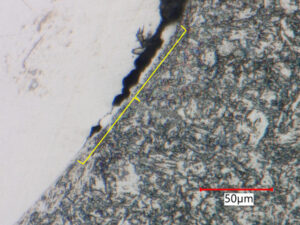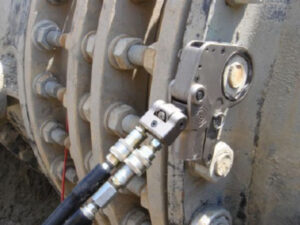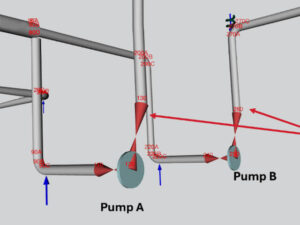E²G has received a $1.5 million U.S. Department of Energy (DOE) grant for the Phase II expansion and commercialization of its explainable artificial intelligence (XAI) technology for the aging energy industry. E²G is developing BENGI (Bayesian Engine for Insights) to enhance and automate complex operational lifecycle decision-making when faced with uncertain and/or incomplete information.
What is the BENGI XAI Technology?

BENGI is a web-based, cloud-computing XAI engine that leverages Bayesian Decision Networks (BDNs) to graphically represent cause-and-effect relationships between uncertain factors, practical decisions, and financial consequences. This single, comprehensive, holistic software framework simultaneously considers many interrelated complex factors to determine the best overall decisions. Users of this technology will maximize profit, minimize cost, increase safety, reduce failures, and benefit from many other desired outcomes.
E²G will integrate BENGI’s technological developments into its suite of software solutions, including the specialty engineering analysis tools. BENGI’s flexible design will also allow seamless integration with third-party software platforms. Regardless of platform, everyone can realize the benefits of BENGI.
Defining Explainable AI
BENGI is unique because it is rooted in human engineering and scientific knowledge rather than pure data analysis, which is often a shortcoming of traditional AI and machine learning (ML) methods. When considering AI and ML technologies, there is no reason to disregard any expert knowledge, data, or field observations that have accumulated over centuries of research and exploration. Rather, this knowledge can be seamlessly integrated with data analysis for the best overall solution, often referred to as explainable AI (XAI).
The primary benefit of BENGI is proper blending of expert knowledge and physics-based models with new inspection findings and maintenance records, in real time. The extent of each update depends on the relative confidence in prior knowledge versus the uncertainty and error in the new observations and data. As a result, the damage state beliefs are continually updated to financially optimize and plan future repair, replace, rerate, and/or retire decision strategies and to determine the best future inspection and maintenance activities – when, where, and how much inspection should be performed.
Phase II: Turning Research into Reality
During Phase II, E²G will solve a major industry problem. Companies are performing more inspections than necessary and/or experiencing costly failures, despite spending a lot of money on inspections. Solving these industrial level applications will yield maximum financial impact.
During Phase II, E²G will leverage BENGI to financially optimize inspection and maintenance activities for piping systems and aging assets subject to progressive damage from many possible mechanisms. E²G is initially focusing BENGI on piping systems, as they will yield the greatest financial benefit from reducing the number of unnecessary inspections and/or decreasing maintenance expenses due to excess or unexpected failures. In the future, BENGI will also consider all asset lifecycle decisions and asset types. Due to piping systems’ massive surface area and difficulty in inspecting intrusively, it is nearly impossible to inspect everything, always. The addition of insulation, external pipe supports and contact points, and buried piping systems further accelerate damage and/or greatly increase inspection costs, thus further intensifying the difficulty.
E²G will solve these issues with PipeSight, a pipeline integrity management software that will leverage the BENGI technology to properly analyze all uncertain and/or incomplete piping system inspection and maintenance data to financially optimize asset management decisions.
Get Involved
PipeSight will soon be available for beta testing. If you would like to financially optimize your pipeline or piping system inspection and maintenance activities, please fill in the form below to participate in an upcoming pilot program. Our AR&D team will work with you to ensure the software directly addresses your specific problems and day-to-day workflow requirements.
Sign-up for the Industry Insights newsletter to stay up to date on future developments and how we continue to solve the latest aging energy industrial problems with BENGI.
E²G’s DOE Award History
- 2019: Phase I – High-performance computing (HPC) for the eec (BENGI is born!)
- 2019: Phase I – CAN2, the first industrial application of BENGI for the nuclear industry
- 2020: Phase II – CAN2, from feasibility study to commercial product
- 2021: Phase I – Extension of HPC for the eec with a specific focus on BENGI technology
- 2021: Phase I – Industrial application of BENGI to kickoff PipeSight for pipeline integrity management
- 2022: Phase II – BENGI, from feasibility study to commercial technology for industrial-level applications





